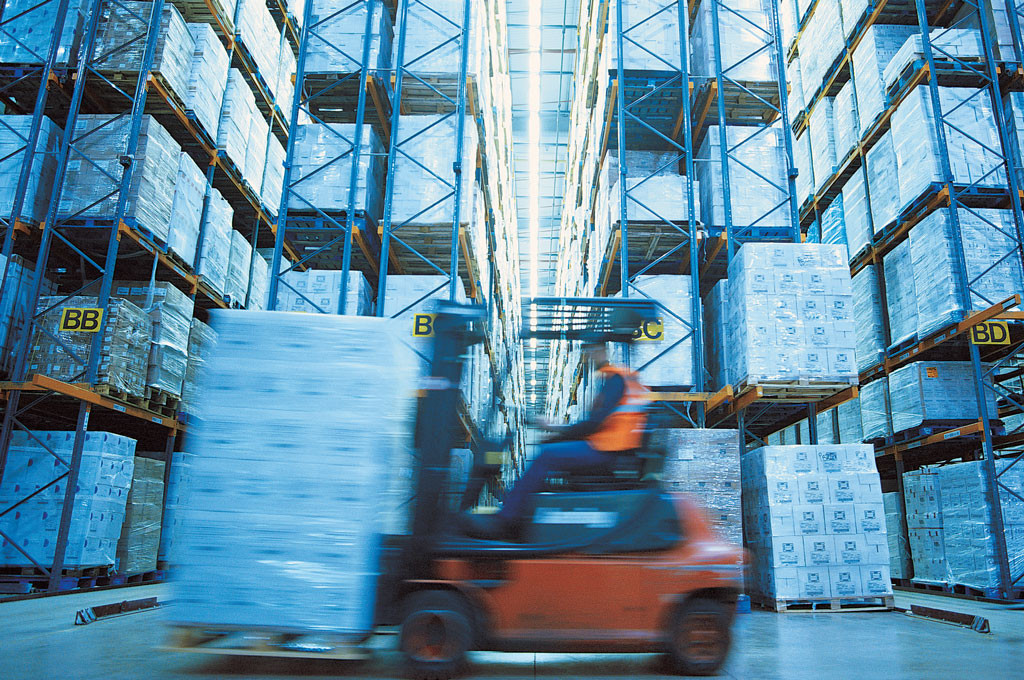Top 5 Forklift Monitoring System Use Cases
Real-time forklift tracking is fast becoming a standard across warehouses, factories, ports, and logistics hubs. As IoT devices have become more widespread, operations teams have moved beyond manual scanning of passive RFID tags or the complexities of Bluetooth and “Active” RFID systems.
Today, next-generation Real-Time Location Systems (RTLSs) like SmartSpace® provide an accurate, sensor-efficient way to track forklifts in real time — unlocking visibility, efficiency, and safety across physical operations.
Below are five key use cases where SmartSpace® transforms forklift management:
-
Locate Forklifts Instantly & Reduce Search Time
On sprawling industrial sites, simply locating the nearest available forklift can eat up valuable time. Often, a forklift could complete a task en route to its home station — but without a clear view of its location and direction, managers can’t optimize decisions in the moment.
SmartSpace® provides a live map of all forklifts across the site, allowing managers to:
-
Reduce time spent searching for vehicles
-
Assign tasks based on real-time availability
-
Make more dynamic decisions without leaving the control room
-
-
Gain Operational Insight Through Location Data
Tracking a fleet’s movement patterns reveals inefficiencies that would otherwise go unnoticed. SmartSpace® captures these insights automatically, allowing site managers to:
-
Identify bottlenecks and unnecessary journeys
-
Reposition idle forklifts closer to high-demand zones
-
Reduce fleet size without compromising performance
The result? Smarter layouts, better routes, and greater productivity — all from the data already being collected.
-
-
Track Inventory Movement Accurately
Proximity-Based Validation
Forklifts can be tracked as they approach specific inventory zones or storage locations. If a forklift stops at the wrong location, alerts can be triggered before the operator picks up the incorrect load.
Automated Inventory Logs
Once cargo is picked up, SmartSpace® automatically logs the item as “in transit”, and again once it reaches its drop-off point. This:
-
Eliminates manual paperwork
-
Reduces lost or misplaced inventory
-
Provides full traceability from pickup to delivery
All movement is recorded and visualized in real time for full transparency.
-
-
Track Forklift Maintenance, Status, and History
By tagging each forklift, SmartSpace® builds a digital profile that can include:
-
Last maintenance date
-
Usage hours
-
Fuel/battery status
-
Age and manufacturer details
From this, automated alerts can be triggered for:
-
Scheduled maintenance
-
Usage-based servicing
-
Compliance checks
This prevents breakdowns and reduces unnecessary downtime.
-
-
Improve Site Safety
Geofenced Speed Control
Define slow-speed zones across your facility. Forklifts exceeding set limits can trigger instant alerts or gradual slowdown, protecting workers in high-risk areas.
Operator Access Control
Only workers wearing authorized tags can operate forklifts. Unauthorized attempts trigger shutdowns or alerts, helping prevent accidents or misuse.
Collision Avoidance
When two forklifts move too close to one another, SmartSpace® can trigger automated collision avoidance protocols, especially critical in tight warehouse aisles or fast-paced environments.
Why It Matters
Forklift accidents, inventory loss, and inefficient logistics cost companies millions annually. With SmartSpace®, forklift tracking becomes more than just dots on a map — it’s a platform for operational intelligence, loss prevention, and workforce safety.
Bonus Use Case: Integrate Forklifts Into Your Wider RTLS
Forklifts don’t operate in isolation — they’re a crucial link between production, storage, loading, and outbound logistics. SmartSpace® doesn’t just track forklifts in real time; it integrates seamlessly with other parts of your RTLS ecosystem to unlock whole-site coordination.
For example:
-
Truck Docking: Know when trucks are arriving and assign forklifts automatically for loading/unloading.
-
Production Lines: Trigger alerts to forklifts when goods are ready to be moved off the line.
-
Storage Coordination: Ensure forklifts only place inventory in approved zones based on availability, stock rotation rules, or temperature requirements.
By linking forklift movement to the broader flow of goods, vehicles, and workers, SmartSpace® becomes a powerful orchestration tool — not just a location tracker.
Ubisense’s Unique SmartSpace® System
Ubisense’s SmartSpace® offers some unique features that many other forklift monitoring systems lack, even those using UWB (Ultra-wideband) technology.
- Ubisense’s UWB is best in class. It is perhaps the most accurate UWB RTLS system on the market and often tracks to centimeter level accuracy. This accuracy can make all the difference when tracking large amounts of inventory being deposited and collected from specific shelves/racks/floor space. It also prevents tags getting confused for one another.
- Smartspace® models environments in 3D, unlike many other UWB systems. This allows for height to also be taken into account – so one can ensure the correct inventory is collected and deposited in the most complex storage environments.
- We have flipped the script on forklift tracking. Through extensive experimentation, Ubisense has developed a system of flipping forklift tracking on its head, to reduce costs and provide the best tracking service possible. By adding sensors to the forklifts themselves and using tags across the facility in question, we can now reduce the number of sensors required for deployment.
- More reliable and more accurate sensors are allowing Ubisense to operate with fewer sensors then our rivals, helping to reduce costs and simplify installment, while also providing unparalleled reliability and data accuracy.
- The Smartspace® platform is tailored to you. We are able to build up a visual representation of your site and tailor your data visualization and automation experiences to your needs. We have worked in many forklift tracking environments, and we can ensure that your forklift tracking solution operates in the way that suits you.

